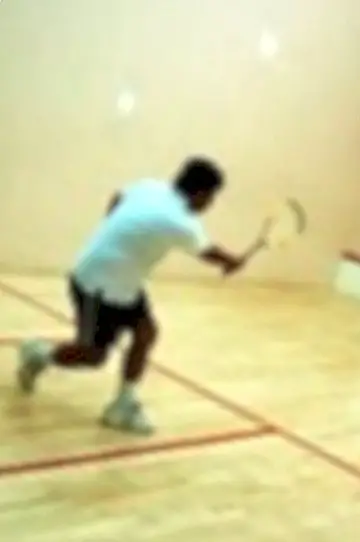Laryngitis in children: symptoms, how to treat it and what to do at home

The truth is that it can arise at any time of the year, although it is true that during the months of autumn and winter tends to be more common and usual. Suddenly, your child wakes up at night with a dry, irritative, angry and hoarse cough. You feel hot from the fever and, on occasion, it may be difficult for you to inhale the air to breathe, so that each time you try it becomes an uncomfortable coughing attack. We are talking about the most common symptoms of laryngitis in children, a very common respiratory and contagious disease.
It is a tremendously common disease, more frequent in the cold months.
What is laryngitis?
As you probably could suspect, laryngitis consists of inflammation of the larynx (1), a tubular organ belonging to the respiratory canal located between the trachea and the pharynx, composed of a total of 9 pieces of cartilage and conoid-shaped, lined internally with a mucous membrane (2).
Specifically, it is located in the lower part of the throat, and in it we find the vocal cords. For this reason, aphonia (and temporary loss of voice) is common as a result of the irritation and inflammation caused by the disease.
It is characterized as an acute respiratory disease in which inflammation of the larynx occurs. As we will see below, the great majority of laryngitis are caused by respiratory viruses, although it can also be caused by bacteria.
In the particular case of infantile laryngitis, tends to affect especially children between 6 months to 6 years, although it is evident that it can also arise at any time of the infant stage.
What are the causes of childhood laryngitis?
Both in laryngitis in children and in laryngitis that appears in adulthood, in most cases it is due to infections. That is, almost all cases are of infectious origin.
When the cause is of infectious origin (caused by a respiratory virus), the infection is caused by the contact of a healthy child with a carrier of it. This infection occurs through the droplets of contaminated secretion that are expelled when speaking or coughing, or when in close contact with the carrier's secretion.
The most frequent respiratory viruses are those known asParainfluenzae-or parainfluenza-, a set of viruses that are characterized as the main culprits of common respiratory infections, as for example is the case of sinusitis, rhinitis, bronchitis or pharyngitis. In addition, they can also produce bronchiolitis Y pneumonias (produced on this occasion by the parainfluenza virus type 3).
Only sometimes the cause is found in microorganisms of bacterial origin.
What symptoms occur and which are more common?
A hallmark of laryngitis - both in children and adults - is that it usually tends to get worse at night, so that as the night approaches it is usually very common for the symptoms to get worse.
Regarding what are the symptoms of laryngitis in more common children, at the beginning the child may have nasal mucus and fever. Then the appearance of dry and strong cough similar to the barking of a dog, which is why it is usually known ascanine cough, causing in turn aphonia or hoarseness.
It may arisestridor, which consists of the appearance of a hoarse noise when breathing, every time the child tries to catch air to breathe.
On the other hand, although it is not so usual, only sometimes inflammation can cause respiratory distress, by making it difficult for normal air to enter. As a result, you can see rapid breathing in the child, in which the chest sinks or ribs are marked.
Fortunately, In most cases laryngitis tends to last between 2 to 3 days, the symptoms disappear little by little.

How is it treated?
There is no specific treatment for the cure of laryngitis, especially if it is laryngitis caused by viruses. Only in case of bacterial laryngitis it would be necessary to administer antibiotics, but as long as the pediatrician has prescribed and prescribed them.
Since inflammation causes irritation and dryness in the larynx, it is important that the child breathe cold moist air. For example, aerosols with cold saline (with medication or not) tend to rapidly improve symptoms, although they must be prescribed by the pediatrician.
Anti-inflammatory medications can help reduce inflammation and reduce the symptoms associated with it. Although they must also have been prescribed by the pediatrician.
What you can do at home to help your child
Once you follow the recommendations indicated by the pediatrician, there are some tips and habits you can follow at home to help your child feel better during the days of the most common symptoms of laryngitis. Take note:
- Prevents the home environment from being dry. To do this you can put water tanks in the radiators and use a humidifier or vaporizer.
- If you do not have a humidifier or vaporizer at home you can open the hot water tap in the bathroom and sit with the little one outside the shower for 15 minutes, so that the steam can breathe.
- Believe it or not, breathing cold air can help improve symptoms. To do this, sheltering your child well, you can get the window to breathe the air of the street.
On the other hand, remember the most important thing: do not administer antibiotics, cough syrups or any other medication if it has not been prescribed by the pediatrician. In case of high fever, and always under the recommendation of the medical specialist, you can administer an antipyretic.

Infusion of thyme, honey and lemon for coughs and colds
The infusion of thyme, honey and lemon is a very popular medicinal drink, with incredible benefits to calm the cough and relieve the symptoms associated with the flu.References
- (1) Clarence T. Sasaki, MD, The Charles W. Ohse Professor of Surgery and Director, Yale Larynx Lab, Yale University School of Medicine. (05/2018). «Laryngitis».Merck Manual Professional Version.
- (2) Karajanagi, Sandeep S .; Lopez-Guerra, Gerardo; Park, Hyoungshin; Kobler, James B .; Galindo, Marilyn; Aanestad, Jon; Mehta, Daryush D .; Kumai, Yoshihikoet al. (03/01/2011). «Assessment of canine vocal fold function after injection of a new biomaterial designed to treat phonatory mucosal scarring».The Annals of Otology, Rhinology, and Laryngology.
Images | Istockphoto This article is published for informational purposes only. You can not and should not replace the consultation with a Pediatrician. We advise you to consult your trusted pediatrician. ThemesDiseases in babies and children


